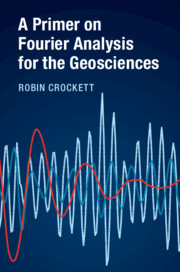Book contents
- Frontmatter
- Dedication
- Contents
- Preface
- Acknowledgements
- 1 What Is Fourier Analysis?
- 2 Covariance-Based Approaches
- 3 Fourier Series
- 4 Fourier Transforms
- 5 Using the FFT to Identify Periodic Features in Time-Series
- 6 Constraints on the FFT
- 7 Stationarity and Spectrograms
- 8 Noise in Time-Series
- 9 Periodograms and Significance
- Appendix A DFT Matrices and Symmetries
- Appendix B Simple Spectrogram Code
- Further Reading and Online Resources
- References
- Index
4 - Fourier Transforms
Published online by Cambridge University Press: 01 February 2019
- Frontmatter
- Dedication
- Contents
- Preface
- Acknowledgements
- 1 What Is Fourier Analysis?
- 2 Covariance-Based Approaches
- 3 Fourier Series
- 4 Fourier Transforms
- 5 Using the FFT to Identify Periodic Features in Time-Series
- 6 Constraints on the FFT
- 7 Stationarity and Spectrograms
- 8 Noise in Time-Series
- 9 Periodograms and Significance
- Appendix A DFT Matrices and Symmetries
- Appendix B Simple Spectrogram Code
- Further Reading and Online Resources
- References
- Index
Summary
Starts with concept of a frequency function as an ordered list of Fourier series coefficients. Summary of derivation of Fourier transform from complex Fourier series and development of frequency-function ideas. Introduction of the Dirac delta function as the Fourier transform of a sinusoid to set context for characteristics of the discrete Fourier transform (DFT) spectrum. Intuitive derivation of DFT from Fourier series of piecewise-approximated sampled continuous data. Symmetry and linearity of Fourier transform and DFT. Frequency resolution of DFT, sampling theorem and Nyquist frequency. Fast Fourier Transform (FFT) as optimised DFT algorithms.
Keywords
- Type
- Chapter
- Information
- A Primer on Fourier Analysis for the Geosciences , pp. 46 - 68Publisher: Cambridge University PressPrint publication year: 2019

